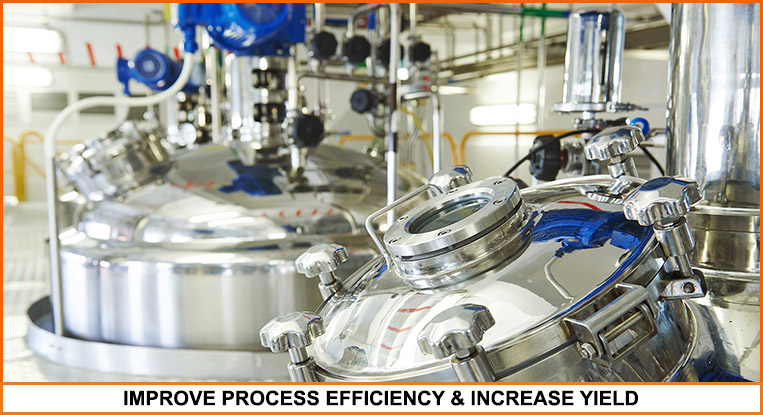The Role of Foam Control in Enhancing Product Top Quality and Performance
Foam control is an often-overlooked yet essential element in the quest of item high quality and functional efficiency across varied markets. This discussion will explore the complex impact of foam on both item stability and manufacturing procedures, elevating necessary questions about the strategies that can be utilized to enhance foam control.

Understanding Foam Formation
Foam formation is a complex phenomenon that can dramatically affect product high quality and operational effectiveness throughout numerous markets. It happens when gas bubbles come to be caught in a fluid, causing the production of a frothy framework. Numerous elements add to this procedure, including the chemical and physical residential properties of the liquid, the presence of surfactants, and the conditions under which mixing happens. Understanding these variables is crucial for handling foam successfully.
The fluid's thickness and surface area stress play pivotal roles in foam security. Surfactants, for instance, can lower surface area tension, advertising bubble formation however also boosting foam security, which can be troublesome in certain applications. In addition, mechanical frustration, temperature changes, and the visibility of impurities can worsen foam generation, making it necessary to keep an eye on these elements throughout manufacturing procedures.
Industries such as food and beverage, pharmaceuticals, and chemical production should be specifically cautious pertaining to foam control. By comprehending the hidden devices of foam formation, organizations can apply targeted strategies to minimize its results, consequently protecting functional effectiveness and ensuring regular item performance.
Influence On Item High Quality
The existence of foam can significantly jeopardize item quality across various industries. In producing processes such as food and drink, drugs, and cosmetics, excessive foam can cause inconsistent item formulas. For example, in food production, foam may catch air, influencing texture and flavor, which can inevitably change consumer understanding and satisfaction.
Furthermore, foam can prevent the harmony of paints and finishings, resulting in flaws like bubbles and irregular coatings. In pharmaceutical applications, foam can interfere with the exact application of fluid drugs, potentially affecting restorative efficacy and client safety. These high quality problems not only reduce the end item's charm however can likewise lead to expensive recalls and damage to brand name reputation.
Additionally, the visibility of foam can complicate quality control actions, making it difficult to achieve constant results and accurate measurements. Effective foam control not only minimizes these risks but likewise enhances total product quality by making certain that formulations fulfill rigid sector requirements. By spending in foam control techniques, business can secure their products, boost client satisfaction, and maintain an affordable side in the marketplace.
Functional Challenges From Foam
Efficient operations in numerous markets can be severely disrupted by the existence of foam, which postures numerous difficulties throughout production processes. Foam can hinder mixing and reaction times, restraining the effectiveness of chemical procedures. In industries such as food and drink, foam formation can result in inaccurate fill degrees, resulting in item waste and inconsistencies in product packaging.

In atmospheres where health is extremely important, such as drugs and food handling, foam can complicate cleansing protocols, producing surprise reservoirs for impurities. This not just raises top quality issues however additionally can cause compliance problems with governing criteria.
Moreover, the psychological influence on operators can not be forgotten; excessive foam can develop a chaotic job environment, causing decreased morale and productivity. In summary, addressing the operational difficulties positioned by foam is vital to maintaining performance and product quality in different industries.
Strategies for Efficient Foam Control
How can markets effectively reduce the challenges posed by foam? Efficient foam control strategies are essential for enhancing product high quality and operational effectiveness. One key strategy is the use of defoamers, which are chemical agents created to lower or eliminate foam formation. Selecting the ideal defoamer needs a thorough understanding of the details procedure problems and the products included.
In addition to chemical services, procedure optimization plays a crucial role in foam administration. Industries can examine and change criteria such as mixing temperature level, rate, and stress to reduce foam generation. Carrying out devices adjustments, like installing foam-breaking gadgets or adjusting tank layout, can even more help in reducing foam degrees.
Routine monitoring and additional hints analysis of foam habits within production processes are additionally important. Using sophisticated sensing units and analytics can supply real-time data, enabling timely interventions and changes. Personnel training is equally vital; making sure that personnel are educated regarding foam characteristics and control techniques can lead to imp source positive foam administration.
Case Researches and Industry Applications
While many industries deal with one-of-a-kind difficulties associated with foam control, case research studies reveal that tailored methods can substantially improve both product quality and functional performance. In the pharmaceutical sector, for example, a leading manufacturer carried out a custom foam control method that decreased foam development during fermentation procedures. This technology not only enhanced return by 15% yet also minimized contamination dangers, guaranteeing greater product stability.
Likewise, in the food and beverage industry, a significant milk producer faced excessive foam throughout pasteurization - Foam Control. By presenting a specialized antifoam agent, they reduced processing time by 20%, which directly converted to increased throughput and lowered energy consumption. The application of foam control gauges ensured constant item structure and preference, enhancing brand commitment
In the chemical manufacturing market, a situation research highlighted the successful application of foam control in wastewater treatment procedures. The implementation of a real-time surveillance system enabled operators to adjust antifoam dose dynamically, bring about a 30% decrease in chemical usage and enhanced effluent quality.
These instance research studies highlight the varied applications of foam control throughout markets, highlighting its vital role in boosting item high quality and functional efficiency.
Conclusion
In conclusion, efficient foam control is essential to boosting item quality and operational efficiency across various industries. By addressing foam development, organizations can minimize the unfavorable impacts on formulas, texture, and dosing precision. Carrying out targeted foam monitoring approaches not just minimizes handling delays and waste yet likewise strengthens tools integrity. Eventually, focusing on foam control adds to improved performance, guarding brand reputation, and enhancing consumer contentment, highlighting its relevance in quality control within manufacturing procedures.
Foam control is an often-overlooked yet important part in the search of product quality and operational performance across varied industries. Team training is just as crucial; making certain that workers are knowledgeable concerning foam dynamics and control techniques can lead to positive foam management.
While lots of sectors encounter unique challenges connected to foam control, situation researches disclose that tailored strategies can significantly boost both item quality and functional efficiency (Foam Control). In the pharmaceutical field, for instance, a leading manufacturer carried out a customized foam control strategy that minimized foam development Continued throughout fermentation procedures.In conclusion, effective foam control is essential to improving product top quality and functional effectiveness throughout numerous industries